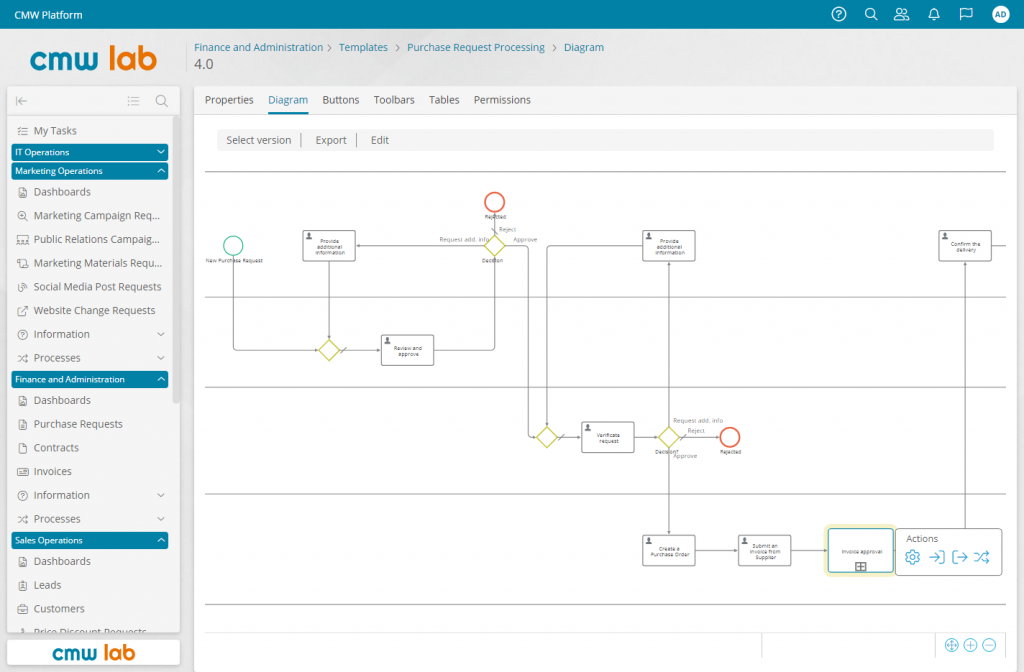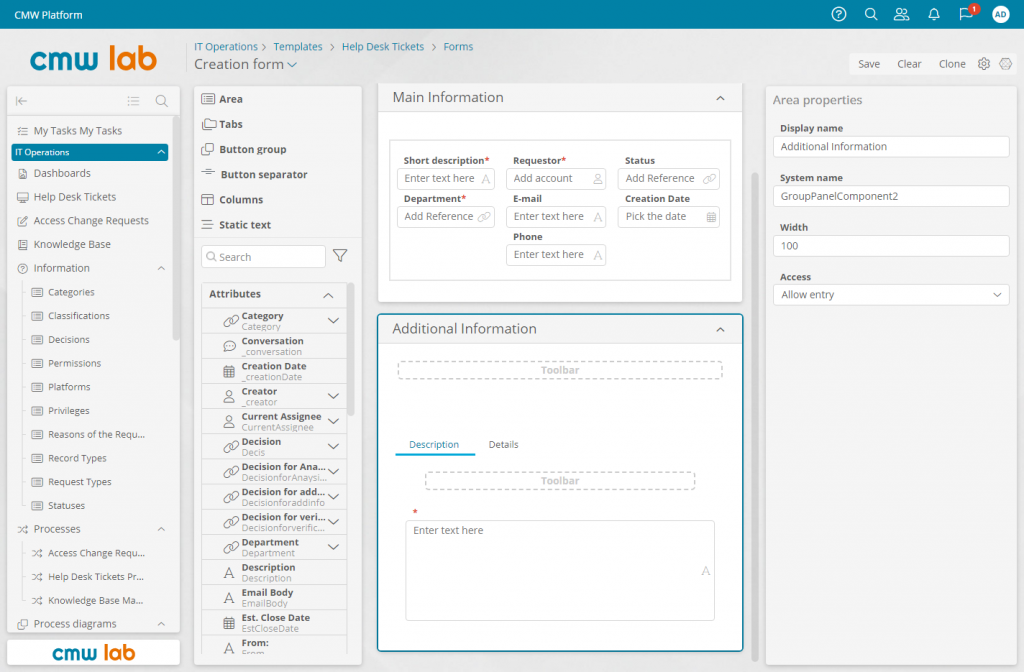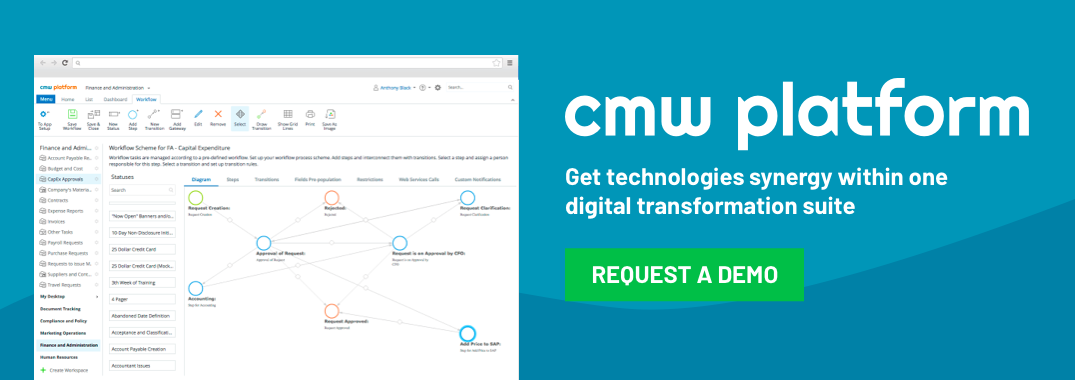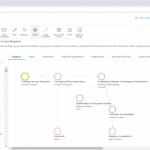Top 10 Benefits of Resultive Business Process Management
Tuesday, July 18, 2023
The definition of business process management (BPM) is broad but it can be slashed to a systematic approach to making a company’s workflow more effective and reliable for better understanding. This short definition highlights business process management importance for business, but not hardly foreground benefits of BPM integration into a business. Below we cover why BPM is needed and how businesses of any size can benefit from BPM technology.
The most tangible benefit of good business process management is Cost Efficiency that can mean decreased costs and increased revenue. While the rest of benefits BPM delivers is intangible in the short term, they add crucial value in the long run, and help both small and huge companies with gearing up for worldwide competition. BPM technology makes any company better equipped to switch gears, respond to its changing business environment faster than competitors, and succeed!
Learn more how BPM software can help you achieve your business goals while it simplifies your business processes management cycle, handle change processes and drive projects to success.
Here are the Top 10 Benefits of good business process management:
Table of Contents
1. Cost efficiency

Simply slashing budgets is no longer a viable option in organizations that have become leaner in response to global economic conditions during recent years. There simply is not much left to cut. However, in order to thrive, organizations still need to maximize the efficiency of the costs they do incur and profit they generate. And good BPM is a driving strategy towards maximizing cost efficiency by streamlining business operations and collaboration, automating repetitive tasks, improving product quality and reducing corporate risks.
CMW Platform combines process management and workflow management with task management and built-in real-time reporting and analysis, so teams collaborate more effectively within both routine workflows and profit-generating projects and bring their projects to fruition within budget, with reported cost savings of 30% to 50%.

2. Business agility
A trend in BPM is toward more nimble processes that respond to organizational learning in the marketplace. Nowadays flexibility is frequently taken as one of business process management goals in addition to cost efficiency. This has led to a greater demand for ultra-flexible business process management tools that are easy to design, change and deploy. Generally, agility incorporates the following elements, all of which are included to CMW Platform:
- Process management: With CMW Platform, process management comes in the form of visual workflows that you can change on-the-fly. You can re-use workflows wherever you need to and customize them as you go.
- Rule management: As work management moves into an unstructured, collaborative age, rules management will be the way to stay properly governed, visible, and compliant, while keeping processes on track. CMW Platform features on-the-fly rule configuration for each department, function or project (whether structured or unstructured), as needed. This provides unique flexibility not seen in other work management tools.
- Integration and automation: CMW Platform offers comprehensive solutions that support task and case management as well as Project Management. The fact that this all sits on one organization-wide database means that the company has full control, visibility and real-time analysis capability.
- Continual optimization and scaling. CMW Platform enables quick-win implementation and non-code addition and modification of running processes. It allows for starting with simple automated workflows and growing incrementally with comprehensive business process management.


3. Compliance ease and visibility
Changes to legislation and other factors have meant that companies without a flexible system for handling end-to-end compliance can incur great, unforeseen costs, both in reporting and penalties. Within BPM systems, companies can build compliance into their business practices if department-specific applications are integrated with the organization as a whole. CMW Platform allows for full integration with function-specific, 3rd party applications via Open API that are also tied to an organization-wide database. This makes it possible to produce automated reports that demonstrate compliance in a cost-efficient way.
4. Customer focus
Savvy customers are demanding thorough proof-of-concept (POC) processes that document how their needs will be heard through self-service Web 3.0 capabilities. Business process management helps organizations to combine people with technology to acquire and retain satisfied customers and CMW Platform lets organizations include any desired user (read: customer) with easy-to-program security roles. This paves the way for ongoing, real-time collaboration with customers in a way that proves responsiveness, personalization, customization and access to information.

5. Staff satisfaction
6. Efficiency and productivity
Consequently, BPM plays an essential role in assisting companies in achieving their productivity and efficiency goals. In order to establish baselines and then enhance them, BPM projects give priority on measuring and monitoring processes, establishing process excellence. Process efficiency rises when operations run smoothly and at full capacity. Moreover, the same tasks can be done within shorter terms, making the team more productive and being able to concentrate on business-critical tasks. Process analysis is continually done. The ability to quickly identify and remove tasks that bring little value boosts productivity overall.
7. Reduced micromanagement
Micromanagement might be effective as it anyway leads to getting the task done. However, it is always detrimental to a company in the long run. Sticking to a set of procedures in order to minimize errors is one of the main reasons that leaders prefer to micromanage their workers.
Micromanagement is no longer necessary due to BPM. Leaders and staff members who are aware of their responsibilities clearly document all SOPs. When a certain step is called for, workers complete it clearly without constant coaching or direction.
8. Single digital environment
The appropriate BPM tool can serve as a unified environment for data fetching and pushing to vital software platforms like ERP and CRM. Department-specific software is typically created for distinct use cases, but data access and use for other purposes can be challenging.
The benefits of integrating core applications with an enterprise-wide BPM platform are numerous. Some procedures require human input, while others do not. With the process automation software enterprise can decrease cycle time and manual entry errors, while granting access to the company’s fundamental operations to all the employees or dividing the access levels for security purposes.
9. Measurable results
You can evaluate the results of new processes using BPM. You may estimate how much time has been saved, decide if enhanced processes actually save money, and keep an eye on these findings in real time. With CMW Platform you may automate the process of monitoring and reporting outcomes, and once you have these findings, you can use them to further direct your internal processes.
10. Improved responsibility
Implementing BPM and citizen development in your organization also becomes the driver for employees to take ownership of their work. As soon as the dependency on IT-department minimizes, the processes can be built and completed faster by non-technical users. It means that the power now is in the hands of any employee who sees the bottleneck and wants to bring value.
At conclusion
Could your organization benefit from improvements in the following areas?
- Increased customer satisfaction and shorter time-to-market for products and services
- Greater efficiency (and cost savings) with existing applications and processes
- Greater team satisfaction as collaboration and best practices are improved
- Full transparency of all activities across the team and organization
…work management is a set of software products and services that apply workflow structure to information and workers so that processes are streamlined and performance is improved…
Some companies already have BPM systems. But, after the BPM initiative is in place for a year or two, professionals in these enterprises are usually frustrated by how difficult it is to change processes, and are surprised by the degree to which colleagues use “work-arounds” for unstructured projects that arise. When formal business processes cannot be changed easily, or when the team isn’t using the formal processes for all work, then visibility, agility, organizational learning and market response times all suffer. CMW Lab low-code BPM software enables non-technical users (Top-managers) to change business processes easily, making sure that company staff don’t need “work-arounds” for projects that occasionally arise and stay effective!





Posted on: in Leadership, Process World